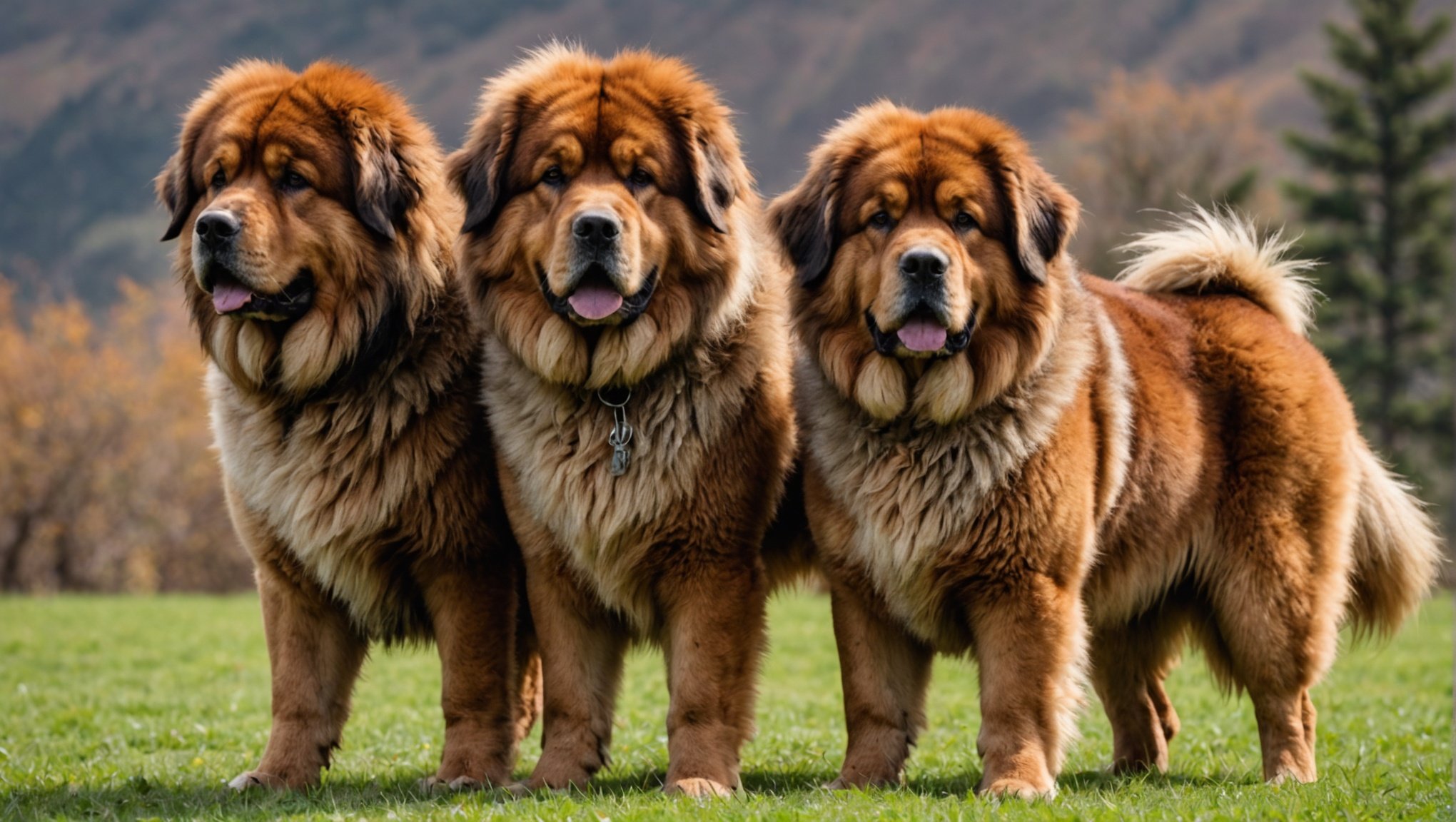The Tibetan Mastiff, a majestic and powerful breed once used to guard monasteries in the Himalayas, is known for its territorial nature. If you have a multi-dog household, managing the territorial behavior of a Tibetan Mastiff can be a challenge. This article provides you with useful information and tips on how to manage this breed’s behavior effectively.
##Understanding the Behavior of a Tibetan Mastiff
Sujet a lire : Can plant-based diets meet the nutritional needs of domestic rabbits?
Before attempting to manage the behavior of a Tibetan Mastiff, it is important to understand their breed-specific traits. Mastiffs are traditionally guard dogs, bred to protect property and livestock. As a result, they have a strong sense of territory and can show aggression if they feel their space is being invaded.
Tibetan Mastiffs are no exception. This breed is known for its independence and protective instincts. They are naturally wary of strangers and other dogs, making them a perfect watch dog but potentially problematic in a multi-dog family.
A voir aussi : What can be done to prevent deer overpopulation in UK forests?
It’s crucial to remember that aggression is not a trait specific to Tibetan Mastiffs, but rather a natural response to perceived threats. It’s the Mastiff’s way of saying, “This is my territory; please respect it.” Recognizing this will allow you to approach the training and care of your Tibetan Mastiff with empathy and understanding.
Training a Tibetan Mastiff Puppy
Training a Tibetan Mastiff puppy is key to managing their territorial behavior later in life. It’s best to start training as early as possible, ideally when the puppy is between 8 and 12 weeks old.
Socialization is a critical part of this process. Exposing your puppy to various people, places, experiences, and other animals can go a long way in helping them become more comfortable in different situations and with different dogs. This will, of course, take some time and patience on your part.
Using positive reinforcement techniques during training can also be beneficial. Rewarding your Tibetan Mastiff puppy for good behavior instead of punishing them for unwanted behavior can help foster a positive association with training.
Maintaining a Balanced Diet and Regular Exercise
Diet and exercise play a significant role in a dog’s behavior. A balanced diet is essential for your Tibetan Mastiff’s overall health and wellbeing. Good quality food can promote a healthy coat, teeth, and bones, as well as reduce the risk of obesity and other health problems.
Exercise, on the other hand, can help channel your Mastiff’s energy in a positive way. Tibetan Mastiffs require moderate exercise to keep them healthy and active. A good rule of thumb is to provide at least 30 minutes to an hour of exercise daily. This can include walking, running, or playing interactive games. Regular exercise also helps in reducing aggressive and territorial behavior.
Addressing Territorial Aggression
Addressing territorial aggression in a Tibetan Mastiff requires a thorough understanding of canine behavior, along with consistent and effective training methods.
If you notice your Mastiff displaying signs of aggression, such as growling, barking, or lunging, it is important to remain calm and assertive. Do not punish your dog for these behaviors, as it may increase their aggression. Instead, redirect their attention to something positive.
Professional dog trainers or behaviorists may be needed if your dog’s aggression becomes a major concern. They can assess your dog’s behavior and provide tailored training interventions to address the issues.
Living in Harmony in a Multi-Dog Household
Living harmoniously in a multi-dog household requires diligence, patience, and consistency. It is important to establish a calm and stable environment for all your dogs.
Ensure each dog has their own space where they can retreat if they feel overwhelmed or threatened. This can be a crate, a bed, or a designated room.
Remember to spend quality time with each dog individually. This will reinforce your bond with them and prevent feelings of jealousy or competition.
Lastly, keep in mind that managing a Tibetan Mastiff in a multi-dog household is not a one-time effort, but a continuous process. It requires ongoing training, socialization, and care to ensure that your household remains a safe and happy place for all your furry family members.
Establishing Pack Structure and Dominance
Pack structure plays a pivotal role in managing the territorial behavior of a Tibetan Mastiff, especially in a multi-dog household. Dogs, by nature, are pack animals, and understanding this inherent characteristic can help in establishing harmony within your home.
In wild dog packs, the leader is the one who displays confidence and control. This dominant role needs to be played by you in your household. If you falter in this, the Tibetan Mastiff, with its dominant aggressive characteristics, can take control and attempt to assume the leadership role, causing discord among your dogs.
Establishing your dominance should begin from a young age. You can achieve this by setting rules and boundaries and sticking to them. Be consistent in your commands and make sure to reward good behavior. Ensure that your Tibetan Mastiff puppy understands that you are the pack leader.
In a multi-dog household, it’s crucial to pay attention to each dog’s interaction. It’s normal for there to be a certain hierarchy among dogs, but you should still remain the ultimate authority. An established pack structure can greatly reduce instances of aggression among dogs, as it instills a sense of order and predictability.
Ensuring Comfort in Cold Weather
As the name suggests, Tibetan Mastiffs hail from the cold weather of the Himalayas. They have an extremely thick and heavy double coat that protects them from harsh climates. However, this doesn’t mean they are immune to colder weather or that they don’t appreciate warmth.
During colder months, ensure your Tibetan Mastiff has a warm place to retreat. If your dog is outdoor, provide a dry and warm shelter. A well-insulated dog house with a waterproof roof and raised floor is ideal.
Bear in mind that despite its high energy and large size, a Tibetan Mastiff should not be left outside in extreme cold for extended periods. Even with their thick coat, they can still suffer from hypothermia or frostbite.
In summary, taking care of a Tibetan Mastiff in a multi-dog household might be challenging due to its territorial nature and dominant aggressive behavior. However, understanding the breed’s characteristic and implementing effective dog training techniques can significantly help in managing their behavior. Regular exercise, a balanced diet, and ensuring their comfort in cold weather are critical elements in maintaining their well-being. Using rewards over punishments, maintaining a stable pack structure, and socializing them from a young age can drastically reduce instances of aggression. Remember, patience, consistency, and love are key to living harmoniously with your Tibetan Mastiffs and other dogs in your household.
Photo credit: Getty Images
Remember: Tibetan Mastiffs are a breed known for their territorial behavior. Understanding their inherent traits and training them accordingly is the most effective way to manage their behavior in a multi-dog household.
















